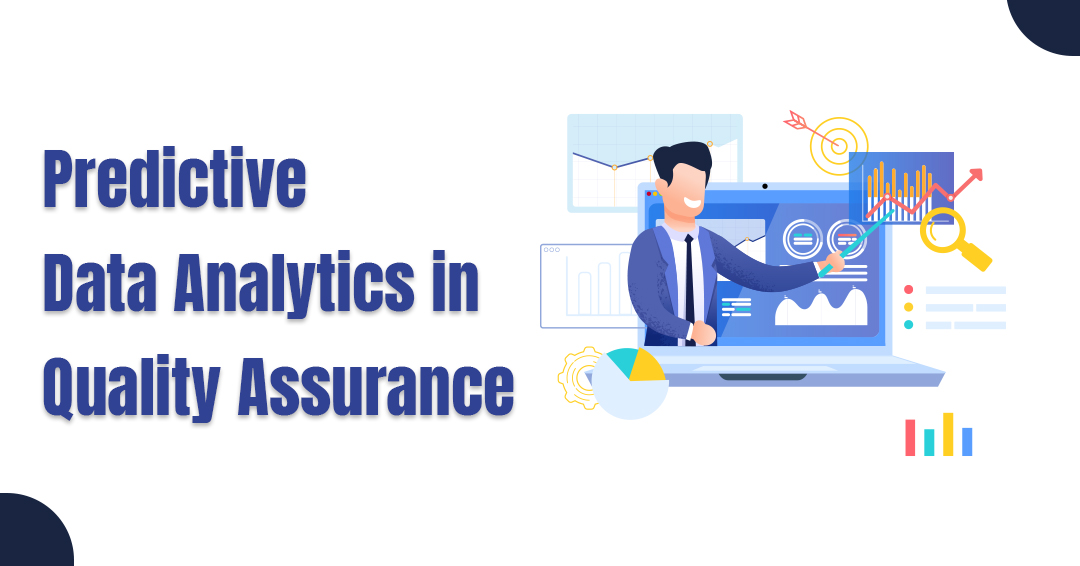The growing demand for data processing, storage, and computational power has led startups and small-to-midsize businesses to increasingly depend on cloud enablement services. However, this shift has introduced a significant challenge: while the cloud offers unparalleled flexibility and scalability, it can also result in unpredictable and hard-to-control expenses. This issue becomes particularly pronounced for companies with fluctuating workloads. As cloud-native businesses scale, their cloud costs often rise alongside other major expenses like payroll and office leases.
If left unchecked, cloud spending can quickly consume a large portion of your budget. Fortunately, cloud cost optimization offers a solution. By implementing smart cloud cost optimization strategies and using the right tools, businesses can gain control over their cloud resources, reduce waste, and ensure that their cloud investment aligns with their overall business objectives. In this guide, we’ll explore practical ways to manage your cloud costs effectively—without sacrificing performance or security.
Understanding Cloud Cost Optimization
Cloud cost optimization is a strategic process aimed at reducing and managing expenses related to cloud services. It involves analyzing cloud usage, identifying inefficiencies, and eliminating waste to ensure maximum value from cloud investments. The focus is on improving visibility and ensuring resources are used efficiently while maintaining performance, security, and availability.
The Importance of Prioritizing Cloud Cost Optimization
Optimizing cloud costs is an ongoing strategy that offers numerous benefits, making your cloud environment more cost-effective and enhancing your competitive edge. By prioritizing cloud cost optimization, you can significantly reduce unnecessary expenditures, freeing up funds for essential areas like product development and hiring. It ensures resource efficiency by right-sizing your assets, so you only pay for what you need when you need it. A well-optimized cloud budget allows for accurate forecasting, minimizing surprises, and facilitating better strategic planning.
Additionally, this process enhances oversight and transparency, providing visibility into your spending, promoting accountability, and aligning technology with business goals. Ultimately, with efficient resource utilization and controlled costs, your company can focus on innovation and accelerate time to market.
10 Proven Methods for Cloud Cost Optimization
Recognizing the importance of cloud cost optimization is just the beginning. The key challenge lies in recognizing and applying effective strategies to manage and minimize your cloud expenses. Let’s explore actionable approaches to manage your cloud costs while maximizing the value of your cloud infrastructure.
1. Thoroughly Understand Your Cloud Bill
Many overlook the details of their cloud bills, concentrating solely on the total amount. However, effective cloud cost management begins with understanding your bill and pricing structure. By examining each line item, you can assess your spending and find opportunities for optimization. Here are the key components of your cloud bill to review:
- Compute Costs: These are costs for the processing power utilized.
- Managed Services Costs: Charges for managed services, such as databases, are based on usage or hourly rates.
- Storage Costs: Charges incurred for storing data in the cloud.
- Bandwidth Costs: These charges are for data transfer in and out of your cloud environment, commonly referred to as “egress costs.”
- Support Costs: These are additional charges based on your cloud provider and support plan.
- Discounts and Savings: Upfront payments, reserved instances, committed use contracts, and other discount programs reduce your total bill.
2. Pick a Cloud Provider with Predictable Pricing
A cloud provider with a complex pricing structure can result in unexpected costs and surprise bills, complicating budgeting efforts. In contrast, choosing cloud providers with clear and predictable pricing enables informed decisions regarding resource usage and cost control. Look for vendors that offer detailed breakdowns of your usage and expenses, simplifying the understanding of your cloud bill and highlighting optimization opportunities. A consistent and transparent pricing model not only helps manage cloud costs but also provides peace of mind.
3. Detect Unused or Idle Resources
Your cloud cost optimization strategy should involve identifying underutilized or inefficient resources, as these can quietly deplete your budget without adding value. To tackle this, implement regular monitoring using cloud monitoring tools that provide alerts for key metrics like CPU, disk, bandwidth, and memory usage. Look for idle resources with minimal activity over an extended period of time. Once you identify these underused assets, assess their future necessity; if they aren’t needed for upcoming projects or current operations, consider downsizing or removing them.
4. Right-Size Your Computing Services
Right-sizing involves aligning your computing resources with actual needs to avoid overpaying for unused capacity. This process includes both scaling down over-provisioned resources and upgrading those that are underperforming.
To effectively right-size your cloud computing services, assess your workloads including their performance requirements and usage patterns. Experiment with different instance sizes to find the optimal configuration for each workload. Utilize heatmaps to visualize computing demand over time, helping you identify cost centers for adjustment. Implement load balancing to distribute workloads evenly, ensuring efficient resource use. Finally, make right-sizing a continuous process by regularly reviewing and adjusting resources in response to changing workloads, leading to significant long-term savings.
5. Autoscaling
One of the key benefits of adopting a cloud-first approach is the ability to scale resources on demand. However, managing this scalability manually can be challenging and often leads to over-provisioning, resulting in increased costs. Autoscaling offers an effective solution by dynamically adjusting the quantity of computing resources based on actual usage. This is especially valuable for unpredictable and mission-critical workloads. Instead of leaving resources idle during low usage or risking capacity limits during peak times, autoscaling ensures you utilize the right amount of resources at the right moment, optimizing both cost and efficiency.
6. Select the Right Storage Options for Your Business
Cloud storage isn’t one-size-fits-all; different types of data and business needs call for tailored storage solutions. Selecting the right storage options is crucial for maximizing performance while minimizing costs. First, choose the appropriate storage type from your cloud provider’s offerings, balancing performance and access frequency. Utilize lifecycle management features to move infrequently accessed data to lower-cost storage tiers over time. Lastly, regularly audit your storage to eliminate outdated or unused data, such as old backups and irrelevant snapshots, ensuring efficient use of resources.
7. Utilize Spot Instances
Spot instances offer a cost-effective way to bid for unused cloud capacity at significantly reduced prices compared to on-demand instances. While they can be interrupted or reclaimed by the provider, they are ideal for non-critical workloads and can enhance your cloud cost optimization strategy. To maximize their benefits, regularly monitor spot instance prices, as they fluctuate based on supply and demand. Use spot instances for stateless applications, development environments, or any workload that can tolerate interruptions.
Additionally, integrating spot instances with load balancers ensures even workload distribution and minimizes the impact of interruptions. Lastly, it is always essential to have a fallback plan, such as automatically switching to on-demand instances when a spot instance is reclaimed.
8. Adopt a Multi-Cloud Strategy
Implementing a multi-cloud strategy, where you utilize two or more cloud services from different providers, can significantly enhance your cloud cost optimization. Each cloud provider offers unique strengths and weaknesses, allowing you to take advantage of the best features from multiple platforms.
One of the key benefits of a multi-cloud approach is the opportunity for cost savings. Since each provider has its own pricing structures for various services, you can compare options and choose the most affordable solutions for your needs. Furthermore, a multi-cloud strategy aids in risk management, increases operational flexibility and helps avoid vendor lock-in, ensuring you have more control over your cloud resources.
9. Implement Real-Time Monitoring and Analytics
Implementing real-time monitoring and analytics offers critical insights into your cloud usage, enabling you to identify inefficiencies and cost anomalies promptly. Track CPU utilization to identify underutilized or overutilized instances, indicating potential scaling needs. Regularly assess memory utilization to ensure instances are appropriately sized for workloads. Keep an eye on network traffic, as high levels can lead to significant data transfer costs. Monitor storage usage to avoid unnecessary expenses by cleaning outdated data.
Assess instance uptime to identify idle instances that can be turned off during non-business hours, and watch for error rates, as high rates may signal underlying issues that could increase costs.
10. Optimize Cloud Spending at Every Step of Software Development
Cloud cost optimization should be an integral part of your software development lifecycle, ensuring that cost efficiency is embedded in your processes. During planning, identify necessary cloud resources and leverage historical data to forecast usage. In the development phase, utilize smaller, cost-effective instances for testing while creating lightweight, scalable applications. For testing, automate processes to reduce resource usage, consider spot instances for non-critical environments, and promptly remove temporary resources after testing. Automate deployment processes to minimize errors and resource consumption.
Monitor your applications with real-time alerts and utilize auto-scaling and load balancing for efficient resource management. Regular maintenance should include reviewing and deprecating unused resources, while updates should be tested on smaller instances to avoid costly errors.
The Wrap
By implementing the strategies outlined, businesses can effectively manage their cloud expenditures, ensuring that every dollar invested drives growth and enhances operational efficiency. Collaborate with a software development company that offers comprehensive IT consulting services. Their cloud expertise can greatly help improve your cloud cost optimization efforts. Also, hire developers who are skilled enough for the technical knowledge necessary to navigate complex cloud environments. Have any queries? Feel free to contact us!









